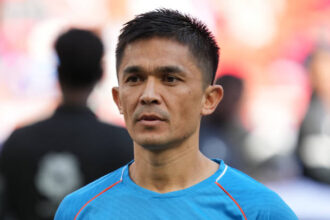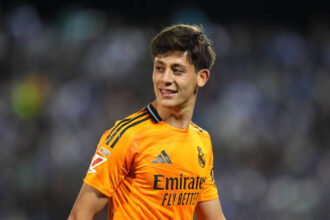The Messi-Guardiola Era: How Pep Guardiola Shaped Messi’s Career
Currently Lionel Messi Collaboration with Pep Guardiola was that valued just one of the brilliant player-manager partnerships that modern football has recorded with respect to all-time history.
Guardiola led Barcelona from 2008 to 2012 with Messi as part of its core; together they have changed the sport forever by their unexampled successes while formulating and re-establishing some ground-breaking playing styles in all places in history of football.
But it was not just the phenomenal heights that Messi reached between the years but the Guardiola philosophy and tactics which shaped Messi’s career and released his potential.
The Arrival of Guardiola and Messi’s Evolution
Lionel Messi turned into already a star within the making while Pep Guardiola was appointed head coach of Barcelona in 2008. He turned into a primary player at his membership, demonstrating remarkable expertise and flexibility. Under Frank Rijkaard, however, Messi was used as a right-winger in a 4-3-3 formation, mostly asked to cut inside to create goal opportunities. While it was indeed a waste of talent, Guardiola saw Messi as a generational player above all else.
Guardiola started his term with a series of drastic changes, including the exodus of established names like Ronaldinho and Deco. Such at some point was to let Messi grow into the fully blooming surprise he turned out to be, knowing that there would not be many detractors around him. Guardiola was going to build a team around Messi; this is the strategy he would use while formulating game tactics in order to give the playmaker the best opportunity to influence the game.
The False Nine Revolution
Of all the tactical choices that Guardiola introduced, the most revolutionary was using Messi as a ‘false nine’. This is usually occupied by a central striker whose main focus would be scoring goals. But Guardiola asked Messi not just to move higher on the pitch but also to drop a bit towards the middle to collect the ball and draw defenders out of position so that he could orchestrate play.
Tactically, this ended up being one of the great hallmarks of Guardiola’s Barcelona. By installing Messi as a false nine, Guardiola could capitalize on Messi’s extraordinary dribbling, vision, and playmaking ability: to allow him freedom to roam so other attackers, namely Pedro and David Villa, could generate diagonal runs into the box. It not only multiplied the objectives Messi scored but also showed that he was capable of influencing games from deeper areas.
Messi’s football during the 2009 UEFA Champions League final ties against Manchester United bore all the hallmarks of such an approach. Including a rare header goal, that too lifted high to score, his performance epitomized the exactness of Guardiola’s system. Moreover, it launched Barcelona as a European football power. It was here that Messi really became an international football idol.
Tactical Versatility and Messi’s Growth
The tactical mind of Guardiola did not cease at the false nine. Over four years of work, he settled on trialling numerous formations: 4-3-3, a miscellaneous 3-4-3, and even a 3-7-0 to exploit every possible advantage that could arise from Messi. This grant of tactical freedom broadened Messi’s opportunity as a different and more complete player.
Messi learned to structure his understanding of space, movement, and decision-making under Guardiola, where he knew he would have to run between the lines, make incisive runs, thread through balls, or even score from incredibly impossible angles to manage his attack. It was Guardiola’s positional play, or “juego de posición,” that instilled in Messi a deeper appreciation of many of the nuances of football, enabling him to operate at a cerebral level much higher than most players.
Messi’s Unprecedented Statistics
The most successful years for Messi in terms of individual accolades coincided with the era of Guardiola. During those years between 2008 and 2012, Messi notched the Ballon d’Or four times in a raw series, a reflection of the individual dominance he had in the world of football.
Messi scored an impressive 73 times across all competitions in 2011-12, a European club record that stands alone today; he also was Barcelona’s all time highest scorer, eclipsing Cesar Rodriguez’s record that has stood for decades. All this was achieved under Guardiola, who incorporated Messi to every attacking play.
Key Matches That Defined the Era
There have been several matches which have highlighted during Guardiola’s reign, the fine chemistry between the manager and his star player.
That 6-2 drubbing of Real Madrid at the Santiago Bernabéu in 2009 is often considered one of the best performances in any way by Barcelona. Messi, deployed as a false nine, tore apart Real Madrid’s defense completely: he scored twice and made several assists while creating chaos for the opposition.
Another iconic moment was during the semi-final of the UEFA Champions League 2011, where he scored a breathtaking solo goal against Madrid. He was a marvel as he weaved through defenders. This, however, was under Guardiola’s tactics whereby he ensured that in high-stake encounters, Messi was given the freedom to express himself.
In the 2011 Champions League final between Manchester United and Barcelona, Messi played splendidly. A long shot goal and complete skyscraping influence in the game marked him out as having matured under Guardiola into what could be considered a best player in the world.
Follow us for latest updates
Article Continues below
Related Articles
Guardiola’s Influence on Messi’s Mentality
Indeed, along with the above mentioned tactical innovation, another even more important impact was that on Messi’s mentality. Guardiola demanded a lot from his players and expected a high standard of excellence and discipline in training and match preparations. Messi flourished in the presence of high work ethics and hunger for improvement.
Guardiola also played a significant role in uplifting the confidence of Messi. He made him the captain at an early age so that he can instill in him the thought that he could carry the heavy burden of expectations. This mental ability became the hallmark of Messi’s career, enabling him to perform constantly under pressure.
Beyond the Numbers: The Aesthetic Revolution
That team of Messi and Guardiola would not just be merely an era for the two winners of accolades and records, but a redefinition of football itself. The format followed by Barcelona, with their quick passing and endless pressing accompanied by intricate movements across the pitch by individual players, was to become the gold standard of modern football. At the center of it all was Messi, whose genius lifted Barcelona performances to almost artistic levels.
Guardiola seldom referred to Messi without calling him “the best player in history”, acknowledging what all the fans and the world’s pundits would have said about the Argentinian player. Individual talent mingled with team play constituted the very essence of Guardiola’s philosophy, and he had demonstrated that the football success had been achieved a little bit through beauty in artistic creation rather than through kicking the ball with strength or solidity against a defense.
The Legacy of the Messi-Guardiola Era
After Guardiola departed from Barcelona in 2012, the footballing world knew that an notable section had concluded. The former membership has collected a total of 14 trophies in 4 years, three of that are La Ligas, 2 UEFA Champions League titles, and a couple of FIFA Club World Cups, similarly to numerous others. Such became their legacy as one of the most successful teams of all time.
In fact, for Messi, the era set the stage for continued brilliance to follow. The tactical and psychological lessons learned from Guardiola shaped him into a player with an ability to adjust to different systems and continue to perform at the highest level.
Guardiola, too, bore the lessons of his time with Messi into his subsequent managerial career. Thus, even if a player like Messi is not available, the high-profile successes at Bayern Munich and Manchester City possess all the makings of a Barcelona-trained manager.
Conclusion
Messi and Guardiola formed such a saga in football where ability met vision and innovation. This tactical genius by Guardiola coupled with Messi’s extra-ordinary ability promised to deliver such hope and vision across a golden era which gave Barcelona success unparalleled with any other in football history.
Albeit both have since gone on to act great in so many ways from each other, their period shared together still serves as the benchmark for excellence in football. For Messi and Guardiola, proving the world wrong is the thing that happens when dream coaching gets together with generational talent. The legacy lives on, inspiring players, managers, and fans alike to strive toward a similar harmony of both brilliance and beauty within the beautiful game.
























